Arielreplicate
Models by this creator

deoldify_image

390
The deoldify_image model from maintainer arielreplicate is a deep learning-based AI model that can add color to old black-and-white images. It builds upon techniques like Self-Attention Generative Adversarial Network and Two Time-Scale Update Rule, and introduces a novel "NoGAN" training approach to achieve high-quality, stable colorization results. The model is part of the DeOldify project, which aims to colorize and restore old images and film footage. It offers three variants - "Artistic", "Stable", and "Video" - each optimized for different use cases. The Artistic model produces the most vibrant colors but may leave important parts of the image gray, while the Stable model is better suited for natural scenes and less prone to leaving gray human parts. The Video model is optimized for smooth, consistent and flicker-free video colorization. Model inputs and outputs Inputs model_name**: Specifies which model to use - "Artistic", "Stable", or "Video" input_image**: The path to the black-and-white image to be colorized render_factor**: Determines the resolution at which the color portion of the image is rendered. Lower values render faster but may result in less vibrant colors, while higher values can produce more detailed results but may wash out the colors. Outputs The colorized version of the input image, returned as a URI. Capabilities The deoldify_image model can produce high-quality, realistic colorization of old black-and-white images, with impressive results on a wide range of subjects like historical photos, portraits, landscapes, and even old film footage. The use of the "NoGAN" training approach helps to eliminate common issues like flickering, glitches, and inconsistent coloring that plagued earlier colorization models. What can I use it for? The deoldify_image model can be a powerful tool for breathtaking photo restoration and enhancement projects. It could be used to bring historical images to life, add visual interest to old family photos, or even breathe new life into classic black-and-white films. Potential applications include historical archives, photo sharing services, film restoration, and more. Things to try One interesting aspect of the deoldify_image model is that it seems to have learned some underlying "rules" about color based on subtle cues in the black-and-white images, resulting in remarkably consistent and deterministic colorization decisions. This means the model can produce very stable, flicker-free results even when coloring moving scenes in video. Experimenting with different input images, especially ones with unique or challenging elements, could yield fascinating insights into the model's inner workings.
Updated 7/2/2024
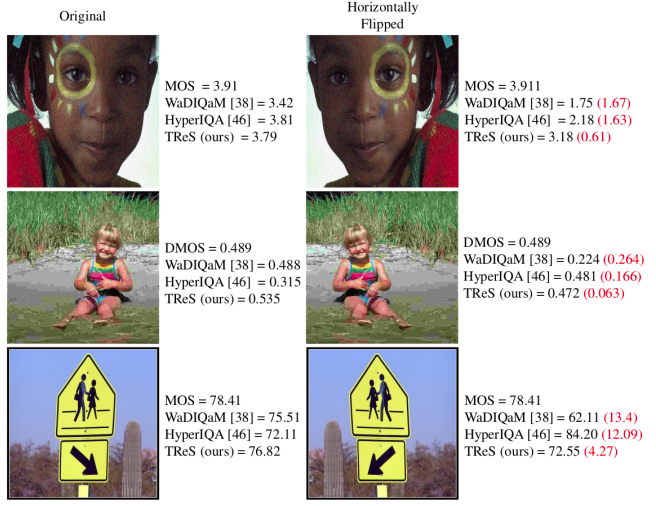
tres_iqa

146
tres_iqa is an AI model for assessing the quality of an image. It can be used to get a numerical score representing the perceived quality of an image. Similar AI models that can be used for image quality assessment include rankiqa, which also provides image quality scores, and stable-diffusion, gfpgan, real-esrgan, and realesrgan, which can be used for image restoration and enhancement. Model inputs and outputs tres_iqa takes a single input - an image file. It outputs a numerical score representing the perceived quality of the input image. Inputs input_image**: The image file to run quality assessment on. Outputs Output**: A numerical score representing the perceived quality of the input image. Capabilities tres_iqa can be used to assess the quality of an image. This could be useful for applications like selecting the best photos from a batch, filtering out low-quality images, or automatically enhancing images. What can I use it for? tres_iqa could be used in a variety of applications that require assessing image quality, such as photo editing, content curation, or image optimization for web or mobile. For example, you could use it to automatically filter out low-quality images from a batch, or to select the best photos from a photo shoot. You could also use it to enhance images by identifying areas that need improvement and applying appropriate editing techniques. Things to try You could try using tres_iqa to assess the quality of a set of images and then use that information to select the best ones or to enhance the lower-quality ones. You could also experiment with different types of images, such as portraits, landscapes, or product shots, to see how the model performs in different contexts.
Updated 7/2/2024
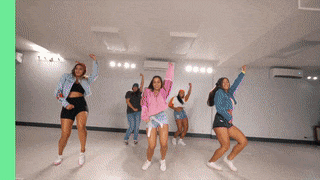
robust_video_matting

45
The robust_video_matting model is a powerful AI tool designed for robust human video matting. Unlike existing neural models that process frames as independent images, this model uses a recurrent neural network to process videos with temporal memory. This allows it to perform matting in real-time on any videos without additional inputs, achieving impressive speeds of 4K 76FPS and HD 104FPS on an Nvidia GTX 1080 Ti GPU. The robust_video_matting model is similar to other video processing models like deoldify_video, which adds color to old video footage, and video-background-remover, which turns the background of a video into a green screen. However, the robust_video_matting model is specifically designed for robust human video matting, with a focus on high-quality results and real-time performance. Model inputs and outputs The robust_video_matting model takes a video as input and outputs a segmented video with the foreground subject extracted. The model can handle a variety of video formats and resolutions, and provides several output options including the raw alpha prediction, the raw foreground prediction, and a composite video with the subject on a green screen background. Inputs input_video**: The video to segment. Outputs Output**: The segmented video with the foreground subject extracted. Capabilities The robust_video_matting model is capable of extracting the foreground of a video with high accuracy and in real-time. It can handle a wide range of video resolutions and frame rates, and is designed to be robust to various filming conditions and subject types. What can I use it for? The robust_video_matting model can be useful for a variety of video production and post-processing tasks. For example, you could use it to create green screen footage for visual effects, remove the background from video calls or live streams, or isolate subjects for further editing or compositing. The model's real-time performance and high-quality results make it a powerful tool for both professional and amateur video creators. Things to try One interesting thing to try with the robust_video_matting model is to experiment with the downsample_ratio hyperparameter. This parameter allows you to adjust the resolution of the input video, which can affect the model's performance and speed. By trying different values for the downsample_ratio, you can find the best balance between quality and processing speed for your specific use case. Another thing to try is to use the model in combination with other video processing tools, such as frames-to-video or video-to-frames from the Replicate platform. By breaking down a video into individual frames, processing them with the robust_video_matting model, and then re-assembling the frames into a new video, you can create unique visual effects and composites.
Updated 7/2/2024
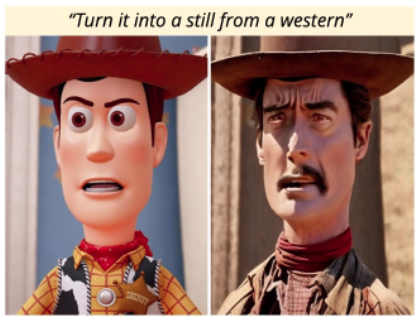
instruct-pix2pix

37
instruct-pix2pix is a versatile AI model that allows users to edit images by providing natural language instructions. It is similar to other image-to-image translation models like instructir and deoldify_image, which can perform tasks like face restoration and colorization. However, instruct-pix2pix stands out by allowing users to control the edits through free-form textual instructions, rather than relying solely on predefined editing operations. Model inputs and outputs instruct-pix2pix takes an input image and a natural language instruction as inputs, and produces an edited image as output. The model is trained to understand a wide range of editing instructions, from simple changes like "turn him into a cyborg" to more complex transformations. Inputs Input Image**: The image you want to edit Instruction Text**: The natural language instruction describing the desired edit Outputs Output Image**: The edited image, following the provided instruction Capabilities instruct-pix2pix can perform a diverse range of image editing tasks, from simple modifications like changing an object's appearance, to more complex operations like adding or removing elements from a scene. The model is able to understand and faithfully execute a wide variety of instructions, allowing users to be highly creative and expressive in their edits. What can I use it for? instruct-pix2pix can be a powerful tool for creative projects, product design, and content creation. For example, you could use it to quickly mock up different design concepts, experiment with character designs, or generate visuals to accompany creative writing. The model's flexibility and ease of use make it an attractive option for a wide range of applications. Things to try One interesting aspect of instruct-pix2pix is its ability to preserve details from the original image while still making significant changes based on the provided instruction. Try experimenting with different levels of the "Cfg Text" and "Cfg Image" parameters to find the right balance between preserving the source image and following the editing instruction. You can also try different phrasing of the instructions to see how the model's interpretation and output changes.
Updated 7/2/2024
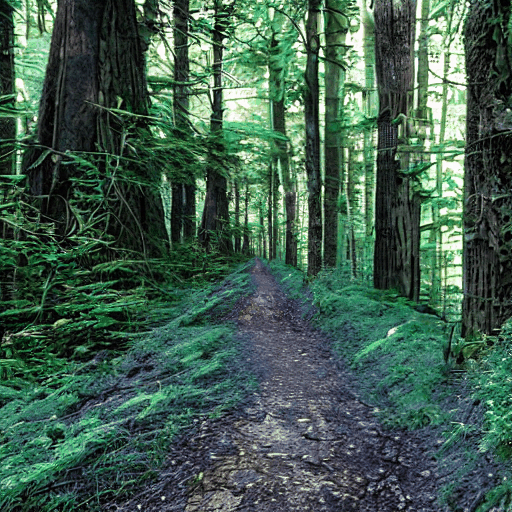
stable_diffusion_infinite_zoom

36
stable_diffusion_infinite_zoom is a AI model developed by arielreplicate that uses Runway's Stable-diffusion inpainting model to create an infinite loop video. This model builds upon the capabilities of the Stable Diffusion text-to-image model, which can generate photo-realistic images from text prompts. The stable_diffusion_infinite_zoom model takes this a step further by using the inpainting functionality to create a seamless looping video effect. Model inputs and outputs The stable_diffusion_infinite_zoom model takes a text prompt as input and produces an infinite loop video as output. The prompt can describe the desired scene or content, and the model will generate a video that appears to zoom in on that scene indefinitely. Inputs Prompt**: A text description of the desired scene or content to be generated. Outputs GIF**: An infinite loop GIF video of the generated scene. MP4**: An infinite loop MP4 video of the generated scene. Capabilities The stable_diffusion_infinite_zoom model leverages the powerful text-to-image capabilities of Stable Diffusion to create unique and visually striking infinite loop videos. By using the inpainting functionality, the model can seamlessly stitch together the generated frames to create a continuously zooming effect. This allows for the creation of mesmerizing and hypnotic videos from simple text prompts. What can I use it for? The stable_diffusion_infinite_zoom model can be used to generate unique and captivating visual content for a variety of applications, such as: Social media posts and content Visual art and digital installations Background video loops for websites or presentations Experimental and abstract video projects The ability to create infinite loop videos from text prompts opens up new creative possibilities and can be a valuable tool for artists, designers, and content creators. Things to try One interesting aspect of the stable_diffusion_infinite_zoom model is the ability to experiment with different text prompts and see how they affect the generated video. Try prompts that describe specific scenes, abstract concepts, or even just single words and observe how the model interprets and visualizes them. You can also try adjusting the inpaint_iter parameter to see how it affects the seamlessness of the loop. Another interesting approach could be to use the stable_diffusion_infinite_zoom model in combination with other AI-powered video tools, such as the infinite_nature model, to create even more complex and visually engaging content.
Updated 7/2/2024
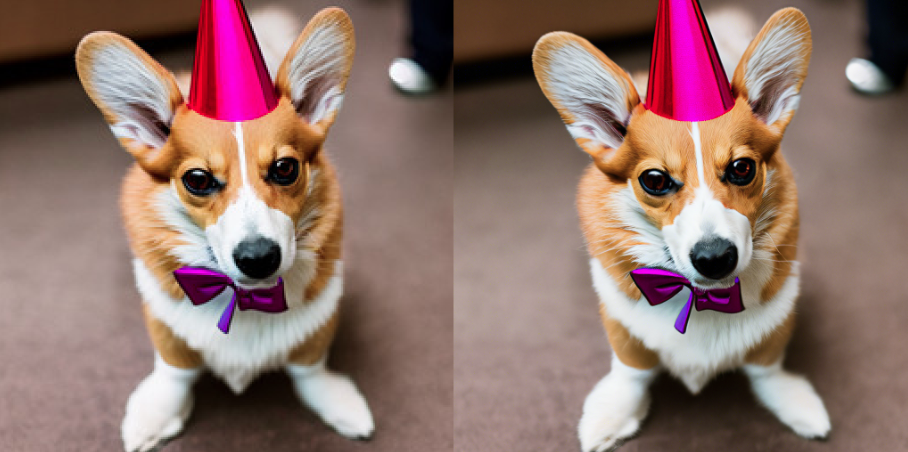
stable_diffusion2_upscaling

7
The stable_diffusion2_upscaling model is an image super-resolution model based on the Stable Diffusion 2 architecture. It can be used to upscale low-resolution images by a factor of 4, preserving important details and producing high-quality, photorealistic results. This model is similar to other Stable Diffusion-based models like Stable Diffusion, Stable Diffusion Upscaler, and Stable Diffusion x4 Upscaler, but is specifically focused on the high-resolution upscaling task. Model inputs and outputs The stable_diffusion2_upscaling model takes a low-resolution image as input and outputs a high-resolution version of the same image, upscaled by a factor of 4. The model is designed to preserve important details and maintain a photorealistic appearance in the upscaled output. Inputs input_image**: The low-resolution image to be upscaled, provided as a URI. ddim_steps**: The number of denoising steps to use during the upscaling process, with a default of 50 and a range of 2 to 250. ddim_eta**: The upscale factor, with a default of 0 and a range of 0 to 1. seed**: An integer seed value to control the randomness of the upscaling process. Outputs Output**: An array of one or more high-resolution images, represented as URIs. Capabilities The stable_diffusion2_upscaling model can take low-resolution images and significantly increase their resolution while preserving important details and maintaining a photorealistic appearance. This can be useful for tasks such as enhancing product images, upscaling old photographs, or creating high-quality visualizations from low-res sources. What can I use it for? The stable_diffusion2_upscaling model can be used in a variety of applications that require high-resolution images, such as: E-commerce**: Upscaling product images to improve the visual appeal and detail for customers. Photography**: Enhancing old or low-quality photographs to create high-quality prints and digital assets. Graphic design**: Generating high-resolution images for use in designs, presentations, or marketing materials. Video production**: Upscaling low-res footage or animation frames to improve visual quality. Things to try Some interesting things to try with the stable_diffusion2_upscaling model include: Experimenting with different ddim_steps and ddim_eta values to find the optimal balance between speed and quality. Applying the model to a variety of image types, from natural scenes to abstract art, to see how it handles different visual styles. Combining the upscaling model with other Stable Diffusion models, such as the Stable Diffusion Inpainting or Stable Diffusion Img2Img models, to create even more powerful image generation and manipulation workflows.
Updated 7/2/2024
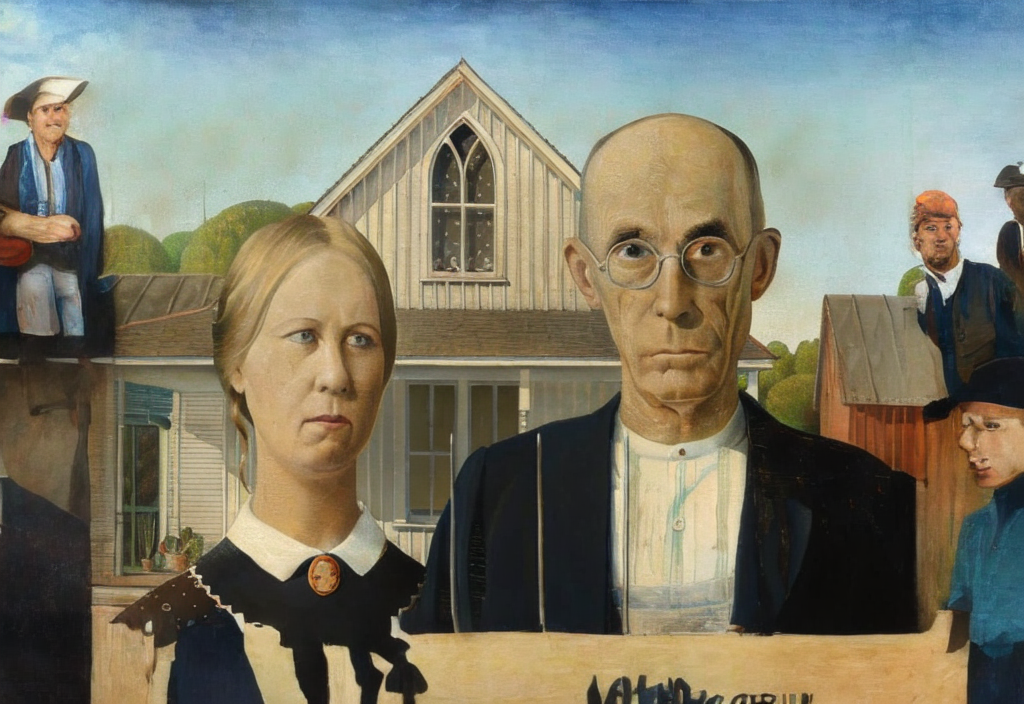
paella_fast_outpainting

5
paella_fast_outpainting is a fast image outpainting model developed by arielreplicate. This model is similar to other outpainting models like sdxl-outpainting-lora, which uses PatchMatch to improve mask quality, and realisticoutpainter, which combines Stable Diffusion and ControlNet for outpainting. paella_fast_outpainting aims to provide a fast and efficient outpainting solution. Model inputs and outputs paella_fast_outpainting takes an input image, a prompt, and the relative location and size of the output image. It then generates an expanded version of the input image based on the provided parameters. Inputs Prompt**: A text description to guide the outpainting process Input Image**: The image to be expanded Input Location**: The relative location of the input image on the canvas (e.g., 0.5,0.5 for the center) Output Relative Size**: The desired size of the output image relative to the input (e.g., 1.5,1.5 for 1.5 times larger) Outputs Output Images**: An array of expanded images based on the input parameters Capabilities paella_fast_outpainting is capable of quickly generating expanded versions of input images. This can be useful for tasks like creating panoramic images, extending the canvas of artwork, or generating larger versions of photos. What can I use it for? paella_fast_outpainting can be used for a variety of creative and practical applications, such as: Expanding landscape or cityscape photos to create panoramic images Extending the canvas of digital paintings or illustrations Generating larger versions of product photos or other images for use in marketing or e-commerce Experimenting with different outpainting techniques and exploring the capabilities of AI-generated content Things to try Try experimenting with different input prompts, locations, and relative sizes to see how the model generates expanded images. You could also try combining paella_fast_outpainting with other models like deoldify_video to colorize and expand old footage, or realistic-vision-v5-inpainting to inpaint and outpaint images in a seamless way.
Updated 7/2/2024
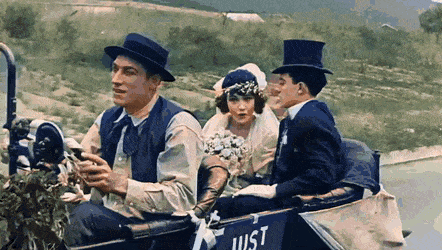
deoldify_video

4
The deoldify_video model is a deep learning-based video colorization model developed by Ariel Replicate, the maintainer of this project. It builds upon the open-source DeOldify project, which aims to colorize and restore old images and film footage. The deoldify_video model is specifically optimized for stable, consistent, and flicker-free video colorization. The deoldify_video model is one of three DeOldify models available, along with the "artistic" and "stable" image colorization models. Each model has its own strengths and use cases - the video model prioritizes stability and consistency over maximum vibrance, making it well-suited for colorizing old film footage. Model inputs and outputs Inputs input_video**: The path to a video file to be colorized. render_factor**: An integer that determines the resolution at which the color portion of the image is rendered. Lower values will render faster but may result in less detailed colorization, while higher values can produce more vibrant colors but take longer to process. Outputs Output**: The path to the colorized video output. Capabilities The deoldify_video model is capable of adding realistic color to old black-and-white video footage while maintaining a high degree of stability and consistency. Unlike the previous version of DeOldify, this model is able to produce colorized videos with minimal flickering or artifacts, making it well-suited for processing historical footage. The model has been trained using a novel "NoGAN" technique, which combines the benefits of Generative Adversarial Network (GAN) training with more conventional methods to achieve high-quality results efficiently. This approach helps to eliminate many of the common issues associated with GAN-based colorization, such as inconsistent coloration and visual artifacts. What can I use it for? The deoldify_video model can be used to breathe new life into old black-and-white films and footage, making them more engaging and accessible to modern audiences. This could be particularly useful for historical documentaries, educational materials, or personal archival projects. By colorizing old video, the deoldify_video model can help preserve and showcase cultural heritage, enabling viewers to better connect with the people and events depicted. The consistent and stable colorization results make it suitable for professional-quality video productions. Things to try One interesting aspect of the DeOldify project is the way the models seem to arrive at consistent colorization decisions, even for seemingly arbitrary details like clothing and special effects. This suggests the models are learning underlying rules about how to colorize based on subtle cues in the black-and-white footage. When using the deoldify_video model, you can experiment with adjusting the render_factor parameter to find the sweet spot between speed and quality for your particular use case. Higher render factors can produce more detailed and vibrant results, but may take longer to process. Additionally, the maintainer notes that using a ResNet101 backbone for the generator network, rather than the smaller ResNet34, can help improve the consistency of skin tones and other key details in the colorized output.
Updated 7/2/2024

dichotomous_image_segmentation

3
dichotomous_image_segmentation is a highly accurate AI model for dichotomous image segmentation, developed by arielreplicate. This model was recently presented at ECCV 2022 and builds upon previous works like U^2-Net and BASNet. It is designed to perform accurate foreground-background segmentation, going beyond simple binary segmentation to handle complex real-world scenes. Model inputs and outputs The dichotomous_image_segmentation model takes a single image as input and outputs a segmentation map that precisely delineates the foreground and background regions. This can be useful for a variety of applications, such as image editing, 3D modeling, and augmented reality. Inputs input_image**: The image to be segmented, provided as a URI. Outputs Output**: The segmented image, with the foreground and background regions clearly demarcated, provided as a URI. Capabilities The dichotomous_image_segmentation model excels at accurately separating foreground and background elements in complex scenes, handling a wide range of object categories and challenging situations like fine details, overlapping objects, and cluttered backgrounds. This is enabled by the model's advanced neural network architecture and the large-scale, high-quality dataset it was trained on. What can I use it for? The dichotomous_image_segmentation model has a variety of potential applications. It can be used for image editing tasks like background removal, object extraction, and compositing. It can also facilitate 3D modeling by providing precise segmentation information, and enable augmented reality experiences by accurately isolating foreground elements. Additionally, the segmented outputs can be used as art design materials or for creating still image animations. Things to try One interesting way to experiment with the dichotomous_image_segmentation model is to try it on a diverse set of images, ranging from simple, clean scenes to more complex, cluttered environments. Observe how the model performs in different scenarios and compare its output to other segmentation approaches. You can also explore how the segmentation results can be incorporated into various creative and technical workflows, such as image editing, 3D rendering, and AR applications.
Updated 7/2/2024

infinite_nature

2
infinite_nature is a model created by arielreplicate that can generate a fly-by scenery video from a single input image. This model is similar to other models like deoldify_video, which can add colors to old video footage, and robust_video_matting, which can extract the foreground of a video. Another related model is deoldify_image, which can add colors to old images. The model was released by Google Research, as indicated by the README in the provided information. Model inputs and outputs infinite_nature takes a single image as input and generates a video output. The video output is a fly-by of the scene depicted in the input image, creating a dynamic and immersive visual experience from a static image. Inputs Input Image**: An image that the model will use to generate the fly-by video. Outputs Output Video**: A video file that depicts a fly-by of the scene in the input image. Capabilities infinite_nature can transform a single image into a dynamic video, adding a sense of motion and exploration to a static scene. This can be useful for creating engaging visuals, such as virtual tours or cinematic experiences, from a single photograph. What can I use it for? The infinite_nature model can be used to create immersive and visually striking content. For example, you could use it to generate virtual tours of landscapes, cities, or architectural spaces by providing a single representative image. This could be beneficial for real estate, tourism, or even educational applications. Additionally, the model could be used to add a sense of movement and dynamism to still images, creating more engaging content for social media, marketing, or multimedia presentations. Things to try One interesting thing to try with infinite_nature is to experiment with different types of input images, such as landscapes, cityscapes, or even abstract art. Observe how the model interprets and translates the visual information into the resulting fly-by video. You could also try adjusting the number of frames generated to see how it affects the pacing and feel of the output. Incorporating infinite_nature into a larger creative project, such as a short film or an interactive experience, could also yield fascinating results.
Updated 7/2/2024